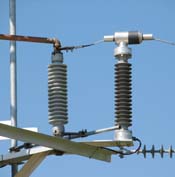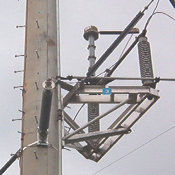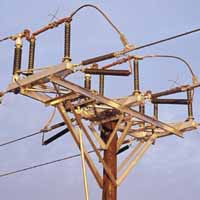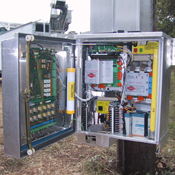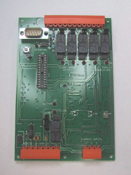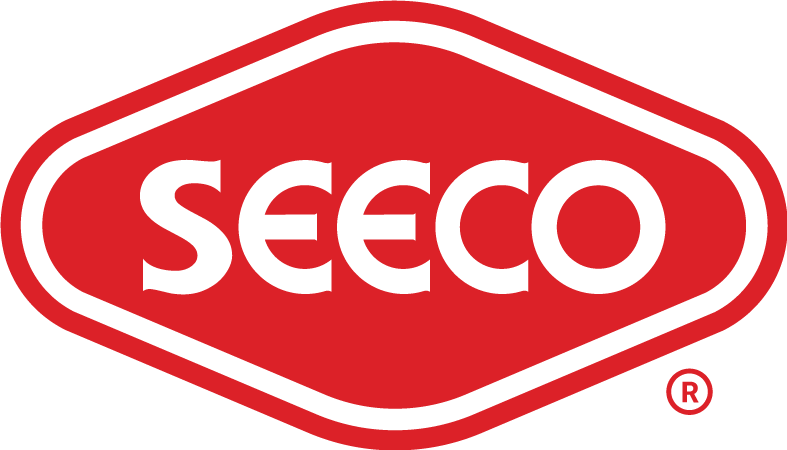Automation and Control Overview
Improving Transmission System Reliability Through Automation
The demands from external stakeholders for greater transmission system reliability are growing louder. Regulatory agencies and Congress are now pushing for significant additional investment in infrastructure, especially transformative technologies that will make the national network of transmission lines smarter, more robust and secure. Many of these ideas for improved reliability are captured by the term ‘smart grid’.
As a major supplier of transmission switches, we have observed first hand the rapidly growing interest and need for more intelligent sectionalizing. In response to that interest, SEECO made the decision in 1995 to begin development of a suite of new products that would complement and support the automation of transmission switches. Particular emphasis was placed on products that would facilitate the rapid identification and isolation of faults and the restoration of service. Today, SEECO is the industry leader in transmission sectionalizing automation. No other company has the resume of successful installs, the breadth of project experience or the integrated suite of products necessary to deliver successful transmission automation.
SEECO partners with many utilities to deliver automation solutions specific to their own unique automation objectives. Solutions are always customer and application specific. Several automation applications that we have found to be common to many utilities include:
Distributed Control (Independent, Automatic Sectionalizing)
-
Radial circuit – Fault isolation with multiple switches
-
Loop circuit – Fault isolation with a single switch
-
Loop circuit –Throw-over between two sources
-
Loop circuit – Throw-over between two sources with peer-to-peer network
Supervisory Control (SCADA)
-
Radial circuit – Fault isolation with multiple switches
-
Loop circuit – Fault isolation with multiple switches
The above list is not exclusive and many other applications are possible. If you do not see your application in the above list, please contact SEECO to discuss your specific automation objectives.
The operational and financial benefits of investing in transmission automation can be significant, and may include one or more of the following depending on your specific application:
-
Reduced outage duration – problem isolation and service restoration can be accomplished in seconds rather than hours or days
-
Cost effective – payback on capital investment can be as fast as a single incident
-
Rapid implementation – a ‘solution’ installed in weeks, not months
-
Brand independent – can be applied to any brand or configuration of group operated switch without limitation
-
Seamless integration – a complete automation solution from a single source that eliminates compatibility and coordination issues caused by sourcing from multiple suppliers
-
Secure – where control of the switch is independent and automatic (distributed control), the local control system cannot be compromised or hacked; distributed control is not dependent on IT, communication or network resources.
SEECO’s automation products can be easily integrated into any existing supervisory control system or operated stand alone (distributed control), providing independent automatic operation of switches under a range of customer defined ‘event’ or threshold parameters. SEECO automation products include the following devices:
-
Transmission class motor operators – The most basic building block for transmission automation, this device will operate any brand or configuration of group operated switch and will fit seamless into any supervisory control system for remote operation and control. Operators can be supplied with or without a customer specified RTU and communication device.
For applications where real time line information is required by supervisory control systems and personnel or where control of the switch is distributed for independent automatic sectionalizing, the following devices can be supplied along with the motor operator for a complete automation package:
-
Current and voltage sensors – Monitoring insulators which interrogate the line and generate real time current and voltage wave forms (output signals). For supervisory control systems, the output information can be transmitted as RMS values through an RTU. For distributed control of the switch, the current and voltage output signals are used by a local control logic device that processes the information and acts to open or close the switch.
-
Local control devices – SEECO’s CVD and ASB control logic devices provide local processing of output signals from line sensors or traditional oil-filled instrument transformers. These devices compare real time current and/or voltage output signals to stored ‘threshold’ parameters to determine if an ‘event’ has occurred. Depending on your application, an event can be fault current of a specified amplitude and duration, continuous gain or loss of potential for a specified time, a combination of the above or other conditions.
Local processing of line sensor output signals enables substantially faster recognition of an event because raw analog data streams do not have to be transmitted to a central SCADA processor. Indication is near-instantaneous with the event because only the event status is transmitted.
For supervisory control applications, the local control logic device provides dry contact indication through an RTU that a valid event has occurred. Operation and control of the associated switch remains with the supervisory control system.
For distributed control applications, the device will open and/or close one or more switches automatically upon recognition of an event. Individual switches may be opened and closed multiple times (if so configured) to effect the required sectionalizing result. If an RTU is present, the device will also provide dry contact indication of the event, lock out status of the switch and phase identity.
-
Remote input/output module – SEECO’s IOM communication device transmits status and control signals between logically paired IED devices using RF, optical fiber or RS485. In transmission automation applications, the IOM facilitates the coordination of multiple switches within a given geographical area.
For distributed control applications, switch open/closed status and line potential status at various sectionalizing points are transmitted to a single (master) local control logic device, which coordinates the operation at each point.
For supervisory control applications, the IOM is used to transmit status and control signals between multiple sectionalizing points and a single RTU and communication device; operation and control of all sectionalizing switches is initiated only by the supervisory control system through the single RTU. The use of less expensive remote I/O devices eliminates the need for more costly RTU and communication devices at each sectionalizing point.
More Information
For more detailed information on SEECO automation products, please use the following hyperlinks to view the appropriate product pages:
